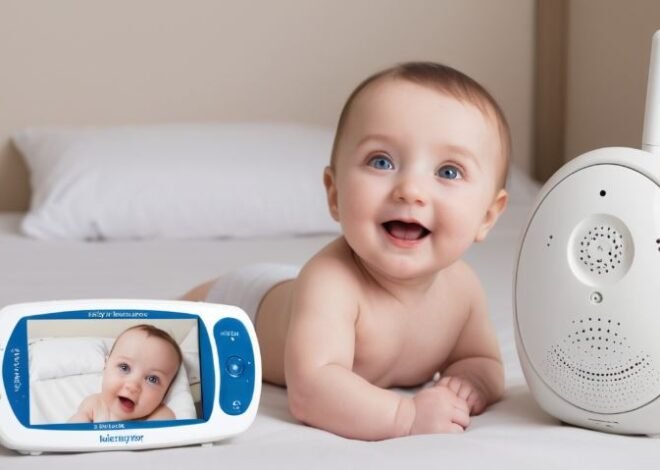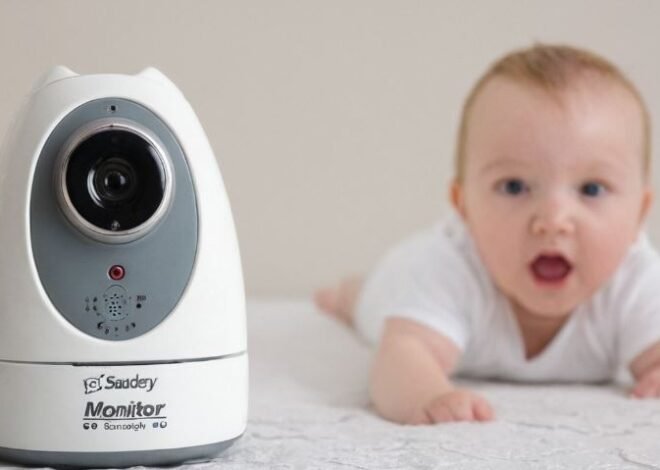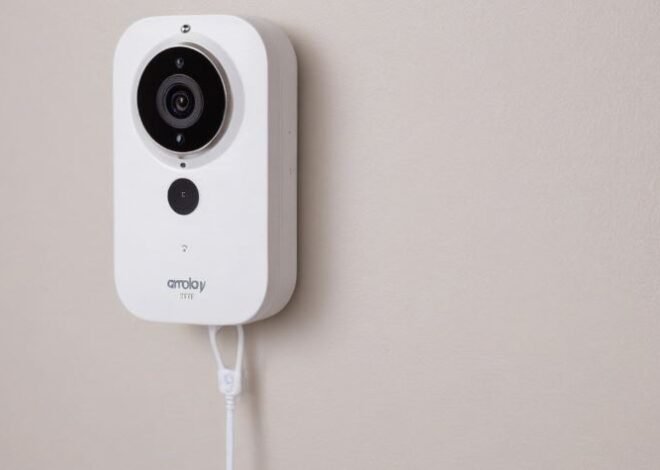
How Baby Monitor Works?
A baby monitor typically consists of a camera and a monitor. The camera, placed near the baby, captures audio and video signals and transmits them to the monitor, allowing parents to remotely observe and listen to their baby.
The functioning of a baby monitor is based on a simple yet effective process. The camera, often equipped with night vision capabilities, is placed in the baby’s room to capture both audio and video signals. These signals are then transmitted wirelessly to the monitor, which is kept with the parents or caregivers.
Modern baby monitors utilize various technologies, including radio frequency (RF) or Wi-Fi, for signal transmission. RF monitors operate on a dedicated frequency, while Wi-Fi monitors use a home’s wireless network. Some monitors also offer additional features such as temperature sensors, two-way communication, and motion detection. The audio and video signals are received on the monitor, providing real-time information about the baby’s activities, ensuring parents can keep a close eye on their little one from a distance.
How Close Should Baby Monitor Be?

The ideal placement for a baby monitor is within close proximity to the baby’s crib, ensuring a clear view and effective monitoring.
The proximity of the baby monitor to the crib is crucial for optimal performance. Placing the camera within close range provides a clear view of the baby, allowing parents to observe their sleep position, movements, and overall well-being. The goal is to position the camera in a way that captures a comprehensive view of the crib without any obstructions.
The distance between the camera and the crib should be balanced to avoid any safety hazards. Placing the camera too close may limit the field of view, while positioning it too far away may compromise the clarity of the video feed. It’s essential to consider the layout of the room, the baby’s sleep patterns, and any potential obstacles when determining the best placement. Regularly checking the camera’s position and adjusting it as needed ensures consistent and effective monitoring.
How Long Should You Use a Baby Monitor?
The duration of using a baby monitor depends on individual circumstances and preferences, but many parents find it practical to use it for the first 2 to 3 years of a child’s life.
The decision of how long to use a baby monitor is subjective and influenced by various factors, including the child’s developmental stage and parental comfort levels. During the first few years of a child’s life, a baby monitor provides valuable assistance in keeping a close eye on the baby’s sleep and safety.
As the child grows and becomes more independent, the need for continuous monitoring may diminish. Many parents find that around the age of 2 to 3 years, when children become more vocal and can communicate their needs, the reliance on a baby monitor decreases. The transition from a crib to a bed is often a milestone that aligns with a reduction in the use of a baby monitor.
Ultimately, the decision on how long to use a baby monitor is a personal one, with parents assessing their child’s development, sleep patterns, and their own comfort levels to determine when monitoring is no longer a necessity. Regular evaluations and open communication among caregivers contribute to a smooth transition.
Where to Set Up Baby Monitor?
The best location to set up a baby monitor is in a spot that provides an unobstructed view of the baby’s crib while considering safety and functionality.
Choosing the right location for the baby monitor is essential for effective monitoring and ensuring the safety of the child. The camera should be strategically placed to offer an unobstructed view of the entire crib, capturing the baby’s sleep position, movements, and overall well-being. This placement allows parents to observe the baby clearly and respond promptly to any needs.
Considerations for safety should guide the decision on where to set up the baby monitor. The camera should be securely attached to a stable surface, avoiding any potential hazards or risks of falling. Placing the camera within the child’s reach should be avoided to prevent tampering or any unintended contact.
The layout of the room, the baby’s sleep patterns, and any potential obstacles should be taken into account when determining the ideal location. Regularly checking the camera’s position and adjusting it as needed contribute to reliable monitoring and parental peace of mind.
When Do You Need a Baby Monitor?

A baby monitor is typically needed from the early days of a baby’s life to around the age of 2 to 3 years, providing parents with the ability to remotely observe and listen to their baby’s sleep and activities.
The need for a baby monitor is most pronounced during the early stages of a baby’s life. Infants often nap multiple times throughout the day and night, and a baby monitor offers parents a convenient way to keep a close eye on their baby’s sleep patterns and safety. The ability to hear and see the baby remotely provides peace of mind and allows parents to respond promptly to their baby’s needs.
As the child grows and develops more independence, the need for constant monitoring may decrease. Around the age of 2 to 3 years, when children are more communicative and can express their needs, parents may find that the reliance on a baby monitor naturally diminishes. The transition from a crib to a bed is often a period when parents reassess the necessity of continuous monitoring.
While a baby monitor is a valuable tool during the early years, the decision on when to stop using it depends on individual circumstances, comfort levels, and the child’s developmental milestones. Regular communication among caregivers ensures a coordinated approach to monitoring and caregiving.



